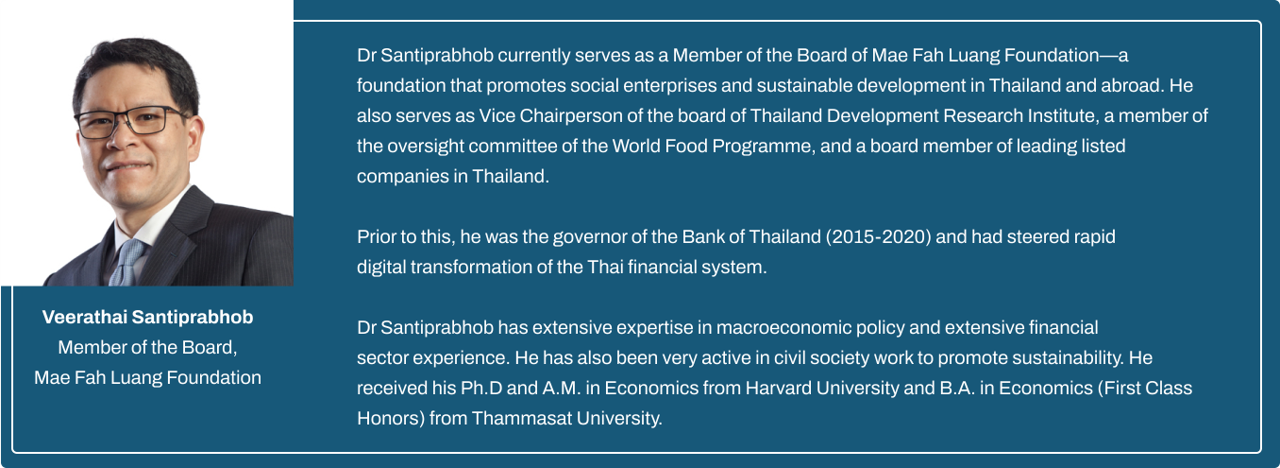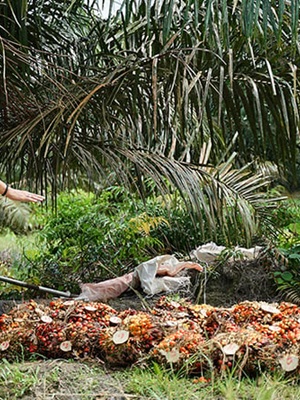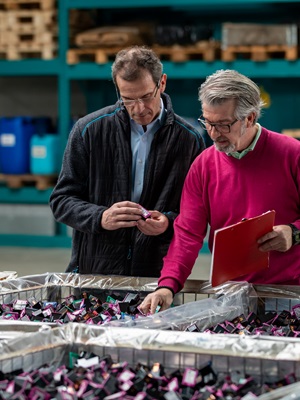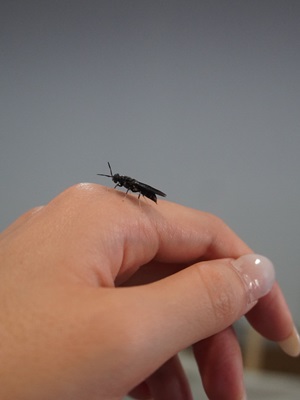I worked in the cocoa sector in 2016 for a short time. I was involved in renewable energy research, primarily on biogas. The multidisciplinary project was led by a consortium comprising Global Green Growth and Strategies for Sustainability and Climate Action (GreenWIN).
I remember it so well. It was my first trip to Jembrana, about 100 km from Denpasar, the capital of Bali, with a team of four. There was an engineer from Italy, two other engineers from France, and a final team member who had just graduated with a master's degree from Wageningen University and Research in the Netherlands. I then left Indonesia to continue my studies in sustainable development in Northern Europe. I chose this field of science because I believe the approach will enable this wealthy country to become more balanced and wiser in managing its natural resources. Nature cannot provide everything we want at our current level of greed.
The next time I visited Jembrana was after I finished my studies in 2019. I was involved in Sustainability Action and Advocacy in Cocoa (SUBAK) with a local NGO named Kalimajari Foundation. UTZ, a certification body based in the Netherlands, funded this project, and they are advocates for sustainable farming and better lives for farmers and their families. I became a regular visitor of Jembrana to support local cocoa farmers, who ranged from expert and novice farmers to young and women farmers. The focus was on those particularly interested in the vision and mission for sustainable cocoa.
My journey became more interesting after I was involved in training on making the Most Significant Changes (MSC), a monitoring and evaluation programme that encourage farmers to share significant changes in their lives before and during the Cocoa Lestari programme. It was then that I learnt about I Gede Eka Aryasa's story.
“Ten years ago, cocoa answered my prayer,” the 38-year-old father, usually called Guru Eka, said. He was from Penyaringan Village, Melaya District, Jembrana Regency.
He loved farming. He didn't remember much, but since he was two, he has helped his father work on the farm daily.
For him and his family, being a farmer is a hereditary livelihood. The farm that his father owned was quite large, and it had various kinds of fruit, plants and other natural products. He was proud to be a farmer at that time.
However, some years later, a family conflict caused a rift between him and his biological father, the first person to introduce him to cocoa.
His father had a gambling habit. He often came home angry, breaking the furniture around him when he got violent. His parents later divorced, and his father remarried. Guru Eka's stepmother was a young woman of his age. The separation led him to live with his biological mother. A decision that caused his father to hate him. Guru Eka helped his mother sell produce from the farms around the village to the market in Denpasar.
The crops sold came from other people’s farms, not their own. Since his father remarried, he has never returned to their farm, which was leased to someone else. His complicated relationship with his father made Guru Eka think he would never own a farm.
His last memory of the farm was an argument between his father and mother. His father had some superior cacao seeds called Lindak, a local cacao variety, and had planned to plant the seeds with Guru Eka before the fight.
His mother often said he was entitled to part of the farm owned by his father because he was his son. In Bali, sons have the prerogative over “gono gini” assets.
Sometime later, the lease on his father's farm ended. His uncle believed strongly that the farm belonged to Guru Eka and that he should buy it. Guru Eka was initially hesitant but eventually sold his only treasure ─ his wedding ring ─ to buy the farm. He used the money from the sale of the ring, plus a small loan from a neighbour, as a down payment. The rest he promised to repay in various ways.
It's odd that Guru Eka had to buy his father's farm, which he could have for free. However, he believes this is the best way. The 5-hectare farm is very productive. Half of the land is planted with cocoa, and the other half has many other crops, such as mangosteen, mango, banana, nutmeg, cloves, coffee, vanilla, and teak.
Guru Eka needed to figure out what to do the first two months after taking over the farm. He watched how others tended and cared for the farm for two months. The process of planting to harvesting. His hard work paid off, and his cocoa farm harvested 500 kilograms of dry cocoa beans every 15 days. Then disaster struck.
In the 2000s, there was a crop plague. Almost all his cocoa plants died from vascular streak dieback (VSD) disease. This condition causes crop yields to drop sharply to only 70 kilograms per harvest. He decided to cut down all the cocoa trees he owned. The goal is to replace it with other plant seeds, such as teak; at least, it's safer for investment. On returning from buying teak seeds, he saw four cocoa trees that continued to bear fruit even though the others were almost dead. He was confused but felt there was hope to keep his cocoa farm, especially when he realised the four trees were Lindak clones his father had planted on the last fateful day before he left the family. Then he turned to God and prayed.
“Ida Sang Hyang Widi Wasa, show me the way. If cocoa is my life, show me the way. Show me the way. Again, show me the way.” Guru Eka’s cocoa farm survived. Little by little, he succeeded in recovering the diseased cacao trees. He studied and sought knowledge from anywhere - through farmer friends who had been successful, training from experienced workers and the Internet.
The road wasn’t easy, but he firmly believed that cocoa farming was his calling. In 2016, his meeting with the Kerta Samaya Samaniya Cooperative (KSS Cooperative) and the Kalimajari Foundation as a part of the Cocoa Lestari programme answered his prayer ten years ago. Through the assistance of the Cocoa Lestari programme, he learned how to ferment beans to produce higher-quality cocoa. The beans initially sold were only Rp. 17,000 per kg (US$1.15), but after fermentation, the cocoa beans were bought by the KSS cooperative for Rp. 42,000 per kg.
He often attends training facilitated by KSS Cooperative and Kalimajari for both the upstream sector relating to planting and harvesting and downstream on marketing. Kalimajari and the KSS Cooperative help develop farmers’ skills to become more efficient through organisational management and UTZ sustainable farming certification.
The MSC programme, in which I am involved, is also one of the efforts to increase the capacity of farmers related to journalism and photography. The training assistance was provided by Anton Muhajir, a freelance journalist in Bali, who was chosen because of his credibility and consistency in voicing changes in civil society.
The aim of this MSC training is for farmers to be able to talk about the changes that have occurred in their lives individually and as a group. The hope is that by sharing the experiences and voices regarding the struggles of farmers in the field, the stories will help motivate anyone involved in sustainable cocoa development in Jembrana, as well as in Indonesia as a whole.
This activity allowed the recording of proof that the Cocoa Lestari program in Jembrana, which had been running for nearly eight years, had produced favourable outcomes for cocoa farmers in Jembrana. These changes should be personally and professionally beneficial for farmers regarding environmentally friendly agricultural practices and sustainable market practices locally and internationally.
I appreciate chocolates even more now that I know the struggles of cocoa farmers in Indonesia. Their situation might have improved, but it is still far from perfect. There is still much work to be done, which will require the support and involvement of multi-stakeholders. All must join hands in fighting for farmers’ rights in the fields.
Posted 18/05/2023

















